When your air conditioner fails during an Austin summer, with temperatures soaring above 100°F, every minute without cooling feels like an eternity. The Texas capital experiences an average of 29 days annually with temperatures exceeding 100°F, making reliable AC repair services not just a convenience but an absolute necessity. Whether you’re dealing with a complete system breakdown, inadequate cooling, or unusual noises coming from your unit, finding the right Austin air conditioning repair provider can mean the difference between a quick fix and days of discomfort.
Austin homeowners face unique challenges when it comes to AC maintenance and repair. The combination of extreme heat, high humidity levels averaging 65% annually, and the constant strain on cooling systems creates a perfect storm for equipment failures. Understanding how to identify quality repair services, what to expect during service calls, and how to maintain your system between professional visits can save you thousands of dollars and ensure your home remains comfortable year-round.
Understanding Austin’s AC Repair Landscape
The Austin metropolitan area hosts over 300 licensed HVAC contractors, but not all service providers offer the same level of expertise or reliability. The Texas Department of Licensing and Regulation requires all AC technicians to hold proper certifications, including EPA Section 608 certification for refrigerant handling and state-specific HVAC licensing. When evaluating Austin air conditioning repair companies, verifying these credentials should be your first step.
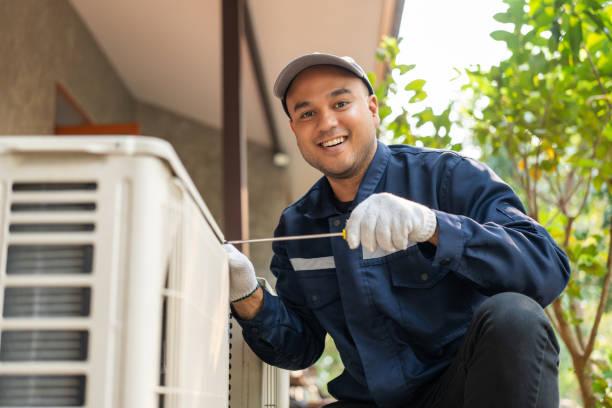
Local climate conditions significantly impact AC system performance in Austin. The city’s subtropical climate means air conditioners run nearly continuously from May through September, logging an average of 2,800 operating hours annually nearly double the national average. This intensive use accelerates wear on components like compressors, fan motors, and electrical contacts, making regular maintenance and timely repairs crucial for system longevity.
Market Dynamics and Pricing Trends
According to recent industry data from the Air Conditioning Contractors of America (ACCA), Austin residents spend an average of $425 per AC repair visit, with emergency services commanding premium rates of $150-$300 per hour. Understanding these pricing structures helps homeowners budget effectively and avoid unexpected expenses. Most reputable AC repair services in Austin provide detailed upfront quotes, eliminating surprise charges and allowing for informed decision-making.
Common AC Problems in Austin Homes
Austin’s unique environmental conditions create specific challenges for air conditioning systems. Limestone dust, prevalent throughout Central Texas, frequently clogs air filters and coats evaporator coils, reducing system efficiency by up to 30%. Cedar pollen, particularly during the December through February season, compounds this issue, requiring more frequent filter changes and system cleanings than in other regions.
Top Five AC Issues Requiring Professional Repair
- Refrigerant leaks: High temperatures cause increased pressure in refrigerant lines, leading to microscopic leaks that gradually reduce cooling capacity
- Compressor failures: Constant operation during summer months accelerates compressor wear, with average lifespan in Austin reaching only 10-12 years compared to 15-20 years in milder climates
- Capacitor breakdowns: Extreme heat degrades capacitor materials, causing startup failures and intermittent operation issues
- Frozen evaporator coils: Humidity levels combined with restricted airflow from dirty filters create ice buildup, blocking cooling completely
- Electrical component failures: Power surges during thunderstorms damage control boards, thermostats, and safety switches
Early detection of these problems can prevent complete system failure. Warning signs include unusual sounds like grinding or squealing, warm air from vents despite proper thermostat settings, frequent cycling on and off, unexplained increases in energy bills, and water pooling around the indoor unit.
Selecting the Right Austin AC Repair Service
Choosing an AC repair provider requires careful evaluation of multiple factors beyond just price. Industry certifications, customer reviews, response times, and warranty offerings all play crucial roles in determining service quality. The Better Business Bureau reports that HVAC complaints in Austin have increased by 23% over the past two years, highlighting the importance of thorough vetting before hiring.
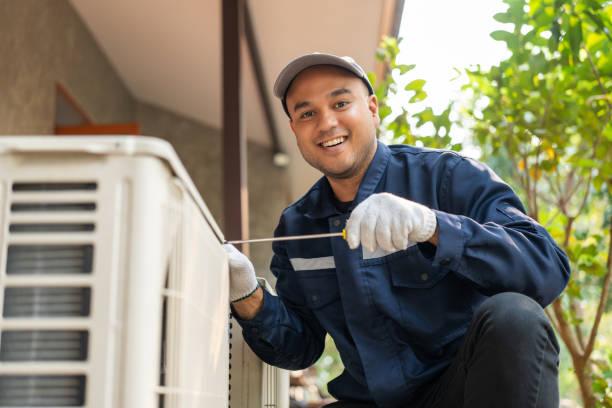
Essential Qualifications to Verify
Professional AC repair technicians in Austin should possess specific qualifications that demonstrate their competence and commitment to quality service. The Texas Department of Licensing and Regulation mandates active HVAC contractor licenses, which require passing comprehensive examinations and maintaining continuing education credits. Additionally, NATE (North American Technician Excellence) certification indicates advanced technical proficiency, with certified technicians demonstrating 15% fewer callbacks according to industry studies.
Insurance coverage protects both homeowners and service providers. Legitimate Austin AC repair companies carry minimum liability insurance of $1 million and workers’ compensation coverage for all employees. Request proof of insurance before allowing any work to begin, as uninsured contractors leave homeowners vulnerable to property damage claims and injury lawsuits.
Red Flags to Avoid
Certain warning signs indicate potentially unreliable or unethical AC repair services. Beware of companies offering prices significantly below market rates, as these often indicate unlicensed operators or bait-and-switch tactics. Pressure to make immediate decisions, refusal to provide written estimates, lack of permanent business address, and requests for full payment upfront all suggest questionable business practices.
Cost Considerations for AC Repair in Austin
Understanding repair costs helps homeowners budget appropriately and recognize fair pricing. Austin AC repair expenses vary based on system type, problem complexity, and service timing. Emergency weekend calls typically cost 50-100% more than standard weekday appointments, making preventive maintenance a cost-effective strategy.
| Repair Type | Average Cost Range | Typical Duration | Frequency |
|---|---|---|---|
| Refrigerant recharge | $200-$550 | 1-2 hours | Every 2-3 years |
| Capacitor replacement | $150-$400 | 30-60 minutes | Every 5-7 years |
| Compressor replacement | $1,500-$2,800 | 3-4 hours | Every 10-15 years |
| Evaporator coil cleaning | $250-$450 | 1-2 hours | Annually |
| Thermostat replacement | $150-$500 | 30-90 minutes | Every 10 years |
Emergency AC Repair Services in Austin
When temperatures exceed 100°F, AC failures constitute genuine emergencies, particularly for households with elderly residents, young children, or individuals with health conditions. Austin’s emergency AC repair services operate 24/7, providing rapid response when cooling systems fail outside normal business hours. Response times average 2-4 hours during peak summer months, though established customers often receive priority service.
Emergency situations warranting immediate professional attention include complete cooling loss during extreme heat warnings, electrical burning smells indicating potential fire hazards, refrigerant leaks creating chemical exposure risks, and water leaks threatening property damage. In these scenarios, shut off the system immediately and contact emergency repair services to prevent further damage or safety risks.
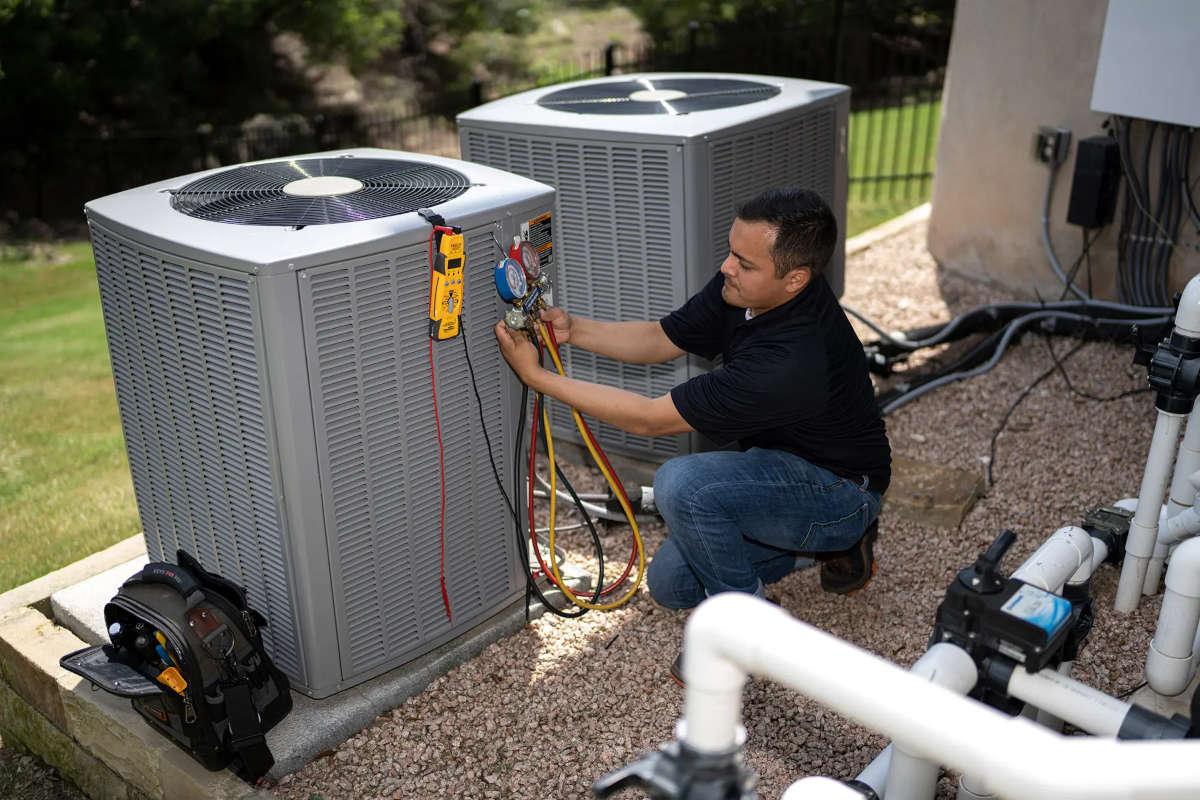
Preventive Maintenance: The Key to Avoiding Repairs
Regular maintenance dramatically reduces repair frequency and extends system lifespan. The U.S. Department of Energy reports that proper maintenance improves AC efficiency by 5-15% while reducing breakdown likelihood by up to 95%. Austin’s demanding climate makes biannual maintenance essential, with service ideally scheduled in early spring and fall.
DIY Maintenance Tasks
Homeowners can perform several maintenance tasks between professional service visits. Monthly filter replacement during peak cooling season maintains proper airflow and indoor air quality. Keep outdoor units clear of vegetation, maintaining at least two feet of clearance on all sides. Clean debris from condenser fins using a garden hose, spraying from inside outward to prevent damage. Check and clean condensate drain lines quarterly using a mixture of bleach and water to prevent clogs and water damage.
Professional Maintenance Services
Certified technicians perform comprehensive system evaluations during professional tune-ups. These services include checking refrigerant levels and adjusting as needed, testing all electrical components and tightening connections, lubricating moving parts to reduce friction and wear, calibrating thermostats for accurate temperature control, and measuring system performance against manufacturer specifications.
“Regular maintenance is like changing your car’s oil skip it, and you’ll pay much more later,” explains James Patterson, a certified HVAC technician with 20 years of Austin experience. “I’ve seen systems last 20 years with proper care, while neglected units fail in half that time.”
Energy Efficiency and AC Repair
Austin Energy’s rebate programs incentivize energy-efficient AC upgrades, offering up to $1,600 for qualifying system replacements. When repairs become frequent or exceed 50% of replacement cost, upgrading to a high-efficiency system often proves more economical. Modern systems with SEER ratings of 16 or higher can reduce cooling costs by 20-40% compared to older units.
Energy efficiency improvements extend beyond equipment upgrades. Proper insulation, sealed ductwork, and programmable thermostats all contribute to reduced operating costs. Austin’s Home Performance with ENERGY STAR program provides comprehensive energy audits, identifying efficiency opportunities throughout your home’s envelope and mechanical systems.
Warranty Considerations and Protection Plans
Understanding warranty coverage prevents unexpected repair expenses. Manufacturer warranties typically cover compressors for 10 years and parts for 5 years, but only with proper registration and professional installation. Labor warranties from installation companies generally range from 1-5 years, depending on service level selected.
Extended protection plans offered by repair companies provide additional coverage beyond manufacturer warranties. These plans typically include annual maintenance visits, priority emergency service, discounted repair rates, and no overtime charges for emergency calls. Evaluate plan costs against average annual repair expenses to determine value, considering that Austin homeowners average $650 yearly in AC repairs without protection plans.
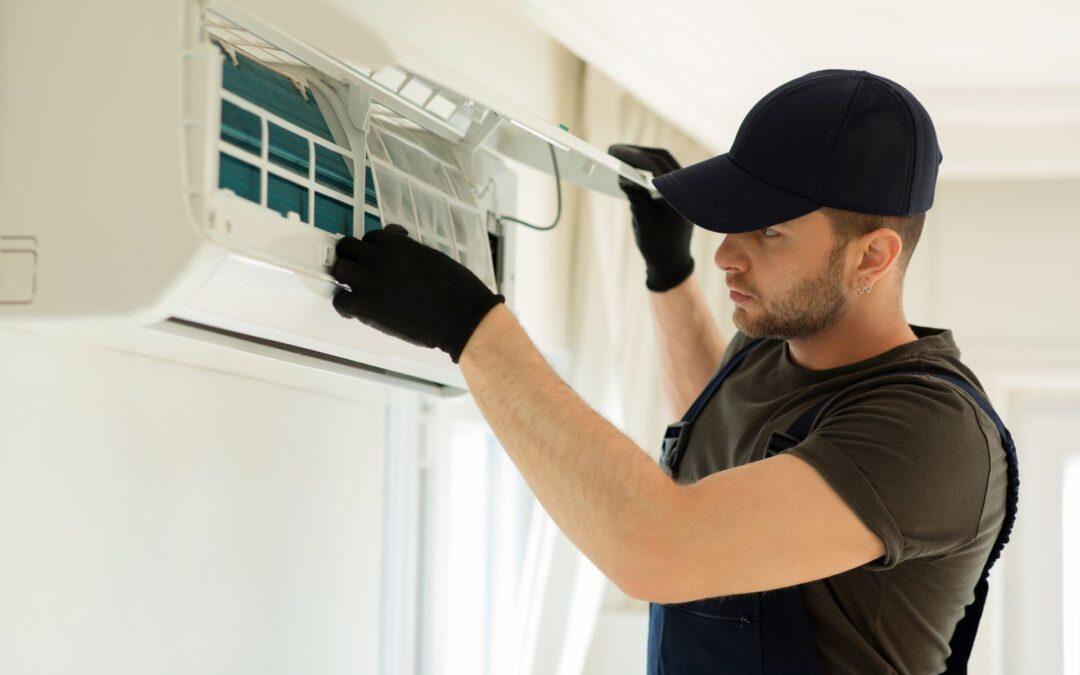
Technology Advances in AC Repair
Modern diagnostic tools revolutionize AC repair accuracy and efficiency. Digital manifold gauges provide precise refrigerant measurements, while thermal imaging cameras identify hidden problems like duct leaks or insufficient insulation. These technologies enable technicians to diagnose issues quickly, reducing diagnostic time by up to 50% and improving first-visit repair rates.
Smart thermostats with diagnostic capabilities alert homeowners to potential problems before complete failure occurs. These devices monitor system runtime, temperature differentials, and cycling patterns, sending alerts when performance deviates from normal parameters. Integration with service provider systems enables proactive maintenance scheduling, preventing emergency repairs during peak demand periods.
Environmental Considerations
Austin’s commitment to environmental sustainability extends to AC repair practices. The city’s climate action plan targets 40% reduction in greenhouse gas emissions by 2030, with HVAC efficiency improvements playing a crucial role. Responsible refrigerant handling prevents ozone depletion and reduces global warming potential, while proper disposal of old equipment ensures hazardous materials don’t enter landfills.
Many Austin AC repair services now offer eco-friendly options, including refrigerant reclamation and recycling, energy-efficient replacement parts, and carbon offset programs for service vehicles. Choosing environmentally conscious service providers supports Austin’s sustainability goals while potentially qualifying for green building incentives.
Conclusion: Ensuring Comfort in Austin’s Climate
Reliable air conditioning repair services are essential for maintaining comfort and safety in Austin’s challenging climate. By understanding common problems, selecting qualified service providers, and investing in preventive maintenance, homeowners can minimize repair costs while maximizing system lifespan. The key lies in partnering with experienced, certified professionals who understand local conditions and provide transparent, quality service.
Remember that the lowest price rarely represents the best value in AC repair. Focus on finding service providers with proven track records, proper credentials, and commitment to customer satisfaction. Regular maintenance combined with prompt attention to minor issues prevents major breakdowns, ensuring your home remains comfortable through Austin’s hottest days.
Whether you’re facing an emergency repair or planning routine maintenance, taking action before problems escalate saves money and prevents discomfort. Austin’s extreme weather demands proactive AC care don’t wait until your system fails during a heat wave to establish a relationship with a trusted repair service.
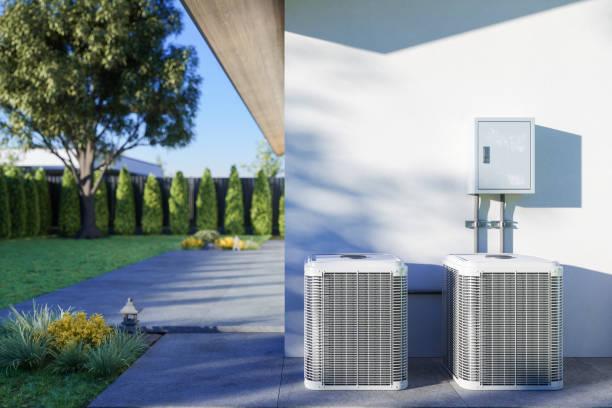
Ready to ensure your AC system performs reliably all summer long? Don’t wait for a breakdown during peak heat. Schedule your professional AC inspection today with a certified Austin technician. Call now for a comprehensive system evaluation and enjoy peace of mind knowing your cooling system is prepared for whatever Texas weather brings. Your comfort is just one phone call away.
Frequently Asked Questions
How often should I service my AC in Austin?
Due to Austin’s demanding climate and extended cooling season, AC systems should receive professional maintenance twice yearly once in early spring before peak cooling season and again in fall. This frequency ensures optimal performance during the intense summer months when your system works hardest.
What’s the average lifespan of an AC unit in Austin?
AC units in Austin typically last 10-12 years, shorter than the 15-20 year national average due to constant operation during extended cooling seasons. Systems running 2,800+ hours annually experience accelerated wear, though proper maintenance can extend lifespan to 15 years.
Should I repair or replace my 10-year-old AC?
Consider replacement if repair costs exceed $2,000 or 50% of a new system’s price. Factor in energy savings from newer, high-efficiency models upgrading from a 10 SEER to 16 SEER unit can reduce cooling costs by 35%, often justifying replacement investment.
Why does my AC freeze up in Austin’s heat?
Frozen evaporator coils result from restricted airflow (dirty filters), low refrigerant levels, or blocked condensate drains. Austin’s humidity exacerbates this issue. Shut off the system immediately, allow ice to melt completely, then call for professional service to address the underlying cause.
What size AC do I need for my Austin home?
Proper sizing requires professional load calculation considering square footage, insulation quality, window orientation, and local climate factors. Austin homes typically require 1 ton of cooling per 400-500 square feet, but oversizing reduces efficiency and comfort while undersizing causes premature wear.
